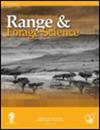High-intensity fire experiments to manage shrub encroachment: lessons learned in South Africa and the United States
IF 1.9
4区 环境科学与生态学
Q3 ECOLOGY
引用次数: 8
Abstract
Human alteration of fire regimes is a hallmark of the Anthropocene; yet few studies have fully explored the implications of utilizing high-intensity fires in grasslands and savannas to manage shrub encroachment. Decades of fire research in South Africa inspired a unique convergence of high-intensity fire experiments in the USA. In the Great Plains of North America, high-intensity fire trials were designed to remove traditional investigator constraints that minimised variability in fire intensity and to explore woody mortality thresholds across a broader suite of experimental conditions. At the same time, studies in the Kruger National Park, South Africa, similarly investigated high-intensity fires to examine previously unstudied relationships between high-intensity fires and woody encroachment. These scientific pursuits have contributed to theoretical advances in our understanding of fire-vegetation dynamics. In this paper, we synthesise these high-intensity fire experiments, the empirical evidence emerging from them and their importance for managing grassland and savanna ecosystems, and the lessons learned and challenges ahead to maintaining critical ranges of variation in fire regimes during the Anthropocene.管理灌木入侵的高强度火灾实验:南非和美国的经验教训
人类改变火种制度是人类世的一个标志;然而,很少有研究充分探讨了在草原和稀树草原上利用高强度火灾来管理灌木入侵的意义。南非几十年的火灾研究启发了美国独特的高强度火灾实验的融合。在北美大平原,设计了高强度火灾试验,以消除传统的研究者限制,最大限度地减少火灾强度的可变性,并在更广泛的实验条件下探索木材的死亡率阈值。与此同时,在南非克鲁格国家公园进行的研究也对高强度火灾进行了类似的调查,以检查以前未被研究过的高强度火灾与树木侵蚀之间的关系。这些科学研究为我们理解火-植被动态的理论进步做出了贡献。在本文中,我们综合了这些高强度火灾实验,从中出现的经验证据及其对管理草原和稀树草原生态系统的重要性,以及在人类世期间保持火灾制度变化的关键范围所吸取的教训和面临的挑战。
本文章由计算机程序翻译,如有差异,请以英文原文为准。
求助全文
约1分钟内获得全文
求助全文
来源期刊

African Journal of Range & Forage Science
ECOLOGY-ENVIRONMENTAL SCIENCES
CiteScore
4.00
自引率
14.30%
发文量
35
审稿时长
>12 weeks
期刊介绍:
The African Journal of Range & Forage Science is the leading rangeland and pastoral journal in Africa. The Journal is dedicated to publishing quality original material that advances rangeland ecology and pasture management. The journal aims to publish research of international importance from any region, but as an African journal, we are particularly interested in research from Africa and relevant to the continent. The Journal promotes both science and its application and authors are encouraged to explicitly identify the practical implications of their work. Peer-reviewed research papers and research notes deal primarily with all aspects of rangeland and pasture ecology and management, including the ecophysiology and biogeochemistry of rangelands and pastures, terrestrial plant–herbivore interactions (both domestic and wild), rangeland assessment and monitoring, effects of climate change on rangelands, rangeland and pasture management, rangeland rehabilitation, ecosystem services in support of production, conservation and biodiversity goals, and the identification and development of intensive and semi-intensive pasture and forage resources to meet livestock production needs. Articles highlighting transdisciplinary linkages among biophysical and social sciences that support management, policy and societal values are particularly encouraged. The Journal includes relevant book reviews and invited perspectives that contribute to the development of range and forage science. Letters to the editor that debate issues raised in the Journal are acceptable. The African Journal of Range & Forage Science is the official journal of the Grassland Society of Southern Africa.
 求助内容:
求助内容: 应助结果提醒方式:
应助结果提醒方式:


